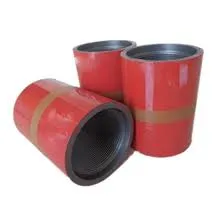- Afrikaans
- Albanian
- Amharic
- Arabic
- Armenian
- Azerbaijani
- Basque
- Belarusian
- Bengali
- Bosnian
- Bulgarian
- Catalan
- Cebuano
- Corsican
- Croatian
- Czech
- Danish
- Dutch
- English
- Esperanto
- Estonian
- Finnish
- French
- Frisian
- Galician
- Georgian
- German
- Greek
- Gujarati
- Haitian Creole
- hausa
- hawaiian
- Hebrew
- Hindi
- Miao
- Hungarian
- Icelandic
- igbo
- Indonesian
- irish
- Italian
- Japanese
- Javanese
- Kannada
- kazakh
- Khmer
- Rwandese
- Korean
- Kurdish
- Kyrgyz
- Lao
- Latin
- Latvian
- Lithuanian
- Luxembourgish
- Macedonian
- Malgashi
- Malay
- Malayalam
- Maltese
- Maori
- Marathi
- Mongolian
- Myanmar
- Nepali
- Norwegian
- Norwegian
- Occitan
- Pashto
- Persian
- Polish
- Portuguese
- Punjabi
- Romanian
- Russian
- Samoan
- Scottish Gaelic
- Serbian
- Sesotho
- Shona
- Sindhi
- Sinhala
- Slovak
- Slovenian
- Somali
- Spanish
- Sundanese
- Swahili
- Swedish
- Tagalog
- Tajik
- Tamil
- Tatar
- Telugu
- Thai
- Turkish
- Turkmen
- Ukrainian
- Urdu
- Uighur
- Uzbek
- Vietnamese
- Welsh
- Bantu
- Yiddish
- Yoruba
- Zulu
Understanding Casing Threads and Couplings in Oil and Gas Industry Applications
Understanding Casing Threads and Couplings in the Oil and Gas Industry
Casing threads and couplings play a pivotal role in the oil and gas industry, ensuring the structural integrity and operational efficiency of wells. As a fundamental aspect of drilling and exploration, it is essential to comprehend their significance, functionality, and the advancements that have come to define modern casing systems.
What are Casing Threads?
Casing threads refer to the specific profile of the threaded connection found on the ends of casing pipes. These threads enable the connection of various casing lengths to create a continuous and secure barrier within the wellbore. The main purpose of casing is to protect the well from surrounding formations, prevent contamination of groundwater, and isolate different pressure zones within the well. The design of these threads is critical; they must withstand high pressures, resist corrosion, and be robust enough to handle the mechanical stresses that occur during drilling and production.
Casing threads come in several standardized designs, including API (American Petroleum Institute) threads and premium threads. API threads are widely used due to their standardized nature, which facilitates compatibility between different manufacturers and simplifies the procurement process. Premium threads, while generally more expensive, offer enhanced sealing performance and improved resistance to wear and galling, making them an attractive option for challenging environments.
The Role of Couplings
Couplings are the components that connect two sections of casing together. They are designed to fit over the ends of the casing pipes, providing a secure joint that maintains the integrity of the wellbore. Couplings are essential for the functionality of casing systems as they help to absorb mechanical stress and reduce the likelihood of failures that could lead to costly leaks or blowouts.
There are two primary types of couplings standard couplings and swellable couplings. Standard couplings are non-mechanical joints that rely on the tightness of the threads to create a seal. They are generally sufficient for conventional drilling applications. Swellable couplings, on the other hand, provide additional sealing capabilities through the use of materials that expand when exposed to well fluids. This type of coupling is particularly useful in environments where traditional sealing methods may fail.
casing threads and couplings

The Importance of Thread Design
Thread design is crucial not only for ensuring mechanical strength but also for achieving an effective seal. Poorly designed threads can lead to a range of issues, including leaks, which can compromise the safety and effectiveness of the well operation. Engineers must consider several factors when selecting thread profiles, such as the type of formation, depth of the well, and the fluids being extracted.
The advancement of material science has led to the development of new alloys and coatings that enhance the performance of casing threads and couplings. Today's casings may feature corrosion-resistant properties to protect against harsh environments, including salty or acidic conditions. Innovations such as 'locking' thread designs have also emerged, which provide additional friction and resistance to movement, reducing the risk of joint failure during operations.
Industry Standards and Testing
To ensure reliability and safety, casing threads and couplings must adhere to strict industry standards. Organizations like the API and ISO (International Organization for Standardization) provide comprehensive guidelines for manufacturing and testing these components. Rigorous testing procedures include checking for tensile strength, torque resistance, and pressure sealing effectiveness.
As the oil and gas industry continually evolves, the demand for more efficient and safer drilling practices has driven advancements in casing technology. The implementation of better designs and materials has resulted in reduced costs and improved operational efficiency, allowing companies to extract resources more effectively while minimizing environmental impact.
Conclusion
Casing threads and couplings are essential components of the well construction process in the oil and gas industry. Their importance cannot be overstated, as they ensure the integrity of well operations and help mitigate the risks associated with drilling. Understanding the various types of threads and couplings, their designs, and compliance with industry standards is crucial for any professional in the field. As technological advancements continue to shape the industry, ongoing research and development will likely lead to further improvements in the performance and reliability of these vital components, ultimately enhancing the safety and efficiency of oil and gas extraction.
-
Tubing Pup Joints: Essential Components for Oil and Gas OperationsNewsJul.10,2025
-
Pup Joints: Essential Components for Reliable Drilling OperationsNewsJul.10,2025
-
Pipe Couplings: Connecting Your World EfficientlyNewsJul.10,2025
-
Mastering Oilfield Operations with Quality Tubing and CasingNewsJul.10,2025
-
High-Quality Casing Couplings for Every NeedNewsJul.10,2025
-
Boost Your Drilling Efficiency with Premium Crossover Tools & Seating NipplesNewsJul.10,2025







